The Inquest of Natasha Abrahart
Following a number of inquests held after the self-inflicted deaths at the University of Bristol, I published an article in January 2018, entitled Bristol University: the Antidepressant Connection. My research found that Miranda Williams, Lara Nosiru, Elsa Scaburri and James Thomson had all been prescribed antidepressants before taking their lives. In July 2018, the inquest of Justin Cheng revealed that he, too, had been prescribed antidepressants before his death.
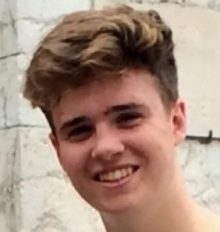 Two weeks ago, the inquest of 19-year-old Ben Murray (right) heard that he “was troubled and asked for help from the university but nobody saw him face to face to address his concerns.” Whether that help came in tablet form was not reported. The article in the Guardian stated that Ben was “one of 12 students at Bristol who have killed themselves or are suspected of taking their own lives since September 2016.”
Two weeks ago, the inquest of 19-year-old Ben Murray (right) heard that he “was troubled and asked for help from the university but nobody saw him face to face to address his concerns.” Whether that help came in tablet form was not reported. The article in the Guardian stated that Ben was “one of 12 students at Bristol who have killed themselves or are suspected of taking their own lives since September 2016.”
Last week, the inquest of 20-year-old Natasha Abrahart (top), a second-year physics student from Nottingham, began at Avon Coroners’ Court. Natasha died by hanging on April 30th last year, at her shared flat in the city. The following day she had been due to give an assessed oral presentation to an audience of students and staff.
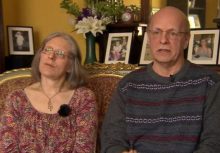 On the first day of the inquest, her mother Margaret (left, with husband Bob) told the court that Natasha was shy from an early age but, despite this, had a wide circle of friends as a teenager, taking part in activities like drama, rock-climbing and baking. Before she started at Bristol University, she spent a summer travelling around Europe with friends.
On the first day of the inquest, her mother Margaret (left, with husband Bob) told the court that Natasha was shy from an early age but, despite this, had a wide circle of friends as a teenager, taking part in activities like drama, rock-climbing and baking. Before she started at Bristol University, she spent a summer travelling around Europe with friends.
Margaret said that Natasha enjoyed her first year at university, although she was disappointed in her 60% mark at the end of it.
At the beginning of her second year, Natasha moved into a flat with two friends who were taking the same course, although one of them, her lab partner, then deferred his studies for a year and went back to live with his family.
Natasha took her next set of exams in January 2018 and scored around 60%, a mark which may not have been good enough to gain selection for a Master’s degree (MSc). Margaret described her as “very worried about being kicked off” the course. She added: “Up until this point in her life had always been able to succeed at everything by working hard and staying organised.”
Margaret then told the court that, on March 20th, Natasha’s remaining flatmate Rajan called the Abrahart family home and was “highly agitated” when he spoke to Bob, her husband. She said: “He blurted out that Natasha had just tried to hang herself. I found it extremely hard to believe what I had just heard as I had always thought of Natasha as being totally on top of things. Rajan proceeded to tell me she had been self-harming for some time, mostly by cutting her arms, but she had recently cut her forehead. Hearing about self-harm was a real shock to me. I had no idea that Natasha had experienced such a high level of distress.”
Margaret spoke to Natasha shortly afterwards, but she only said: “That was silly. I am alright now. I won’t do that again.” She told Margaret that she had recently started a course of antidepressants which had run out, before promising to make an emergency appointment with a doctor for the following day.
 The antidepressants in question had been prescribed on February 20th, exactly four weeks before her suicide attempt, when Natasha went to see Dr Caroline St John Wright (right) at the University Students’ Health Service (SHS). She was given a prescription for seven tablets of Sertraline, although the SHS system stated that she was meant to have received 28 tablets.
The antidepressants in question had been prescribed on February 20th, exactly four weeks before her suicide attempt, when Natasha went to see Dr Caroline St John Wright (right) at the University Students’ Health Service (SHS). She was given a prescription for seven tablets of Sertraline, although the SHS system stated that she was meant to have received 28 tablets.
 At the inquest, the Abrahart family’s barrister Tom Stoate (left) questioned Dr St John Wright, who had said that Natasha was in “an acute state of distress” on February 20th. He asked the doctor: “Was there any action you had taken on your own initiative to get in touch with any of the many services University of Bristol offers?”
At the inquest, the Abrahart family’s barrister Tom Stoate (left) questioned Dr St John Wright, who had said that Natasha was in “an acute state of distress” on February 20th. He asked the doctor: “Was there any action you had taken on your own initiative to get in touch with any of the many services University of Bristol offers?”
Dr St John Wright said she did not have the patient’s consent to do this, but Mr Stoate replied that the GP had not made any attempt to get consent. The doctor said this would not have been “a reasonable thing to ask someone at first presentation”.
 Natasha’s emergency appointment the day after her suicide attempt was with Dr Emma Webb (right), who deemed her to be at high risk of suicide and reported her to the local Crisis Team. She saw Natasha again on April 20th and found her to be “more communicative”, although the student told her she did not feel prepared for her exams. Natasha had at this point gone more than a month without antidepressants. Dr Webb gave her a Sertraline prescription and arranged a follow-up appointment for two weeks later.
Natasha’s emergency appointment the day after her suicide attempt was with Dr Emma Webb (right), who deemed her to be at high risk of suicide and reported her to the local Crisis Team. She saw Natasha again on April 20th and found her to be “more communicative”, although the student told her she did not feel prepared for her exams. Natasha had at this point gone more than a month without antidepressants. Dr Webb gave her a Sertraline prescription and arranged a follow-up appointment for two weeks later.
Mr Stoate pointed out that the follow-up appointment should have been arranged within one week, rather than two, according to NHS guidelines. Dr Webb said: “In practice it’s very difficult to do that. My usual practice was to follow up in two weeks.” She added that a lack of resources made it difficult to adhere to the guidance. Natasha died 4 days before her follow-up appointment was to take place.
On the second day of the inquest, the court heard that on February 23rd, 3 days after she had been given the first prescription of seven Sertraline tablets, Natasha had a meeting with Dr Annear, a trainee psychiatrist, where she was assessed as “moderate risk“. A few days later, Natasha made another attempt to take her life.
In another consultation on March 5th , Dr Annear noted that she was “more engaging“. Dr Annear prescribed seven days worth of antidepressants and rated her as “low risk” of harming herself.
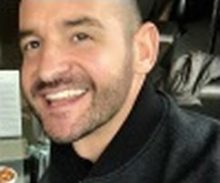 Consultant psychiatrist Dr Daniel Hodgson (left), whose role included supervising Dr Annear, told the inquest that they had discussed Natasha on March 6th, “along with about 20 other cases” during a 90-minute meeting. He said that he could see that there was no reason to change her plans. But Tom Stoate said that, given Natasha’s risks, she was clearly “not a low risk patient“.
Consultant psychiatrist Dr Daniel Hodgson (left), whose role included supervising Dr Annear, told the inquest that they had discussed Natasha on March 6th, “along with about 20 other cases” during a 90-minute meeting. He said that he could see that there was no reason to change her plans. But Tom Stoate said that, given Natasha’s risks, she was clearly “not a low risk patient“.
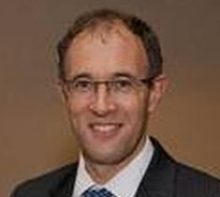 An independent report, carried out by Dr Laurence Mynors-Wallis (right) on behalf of the coroner, found that the risk of self-harm was “not adequately assessed and her overall assessment was significantly flawed“.
An independent report, carried out by Dr Laurence Mynors-Wallis (right) on behalf of the coroner, found that the risk of self-harm was “not adequately assessed and her overall assessment was significantly flawed“.
On the third day, the inquest was told that a crisis team from the Avon and Wiltshire Mental Health Partnership (AWP) visited Natasha on March 22nd. Crisis team worker Toby Gray said that she “found it difficult to communicate, only gave him “yes” or “no” answers during the meeting, and he assessed her as medium risk”.
She was not seen again by anybody from the crisis team until April 26th, four days before her death. The delay was said to be partly because there was only one person in the trust whose job was to allocate cases, and he was on holiday for two weeks. Consequently, Natasha’s case was not allocated to another worker until his return.
On the fourth day, expert witness Dr Laurence Mynors-Wallis told the court that he could not understand why Natasha had been downgraded from high risk, even though she had tried to take her life at least twice. He said that Dr St John Wright, who saw Natasha on February 20th, was correct to conclude she was at high risk. But, when she saw a trainee psychiatrist three days later, her risk level was changed to moderate and no clear treatment plan was put in place. “I’m not clear why it was downgraded,” said Dr Mynors-Wallis.
Natasha returned to see a second university GP, Dr Webb, on March 21st after another apparent suicide attempt. Again, the doctor took swift action to get her help. This time she was seen the following day, but a member of a mental health crisis team concluded that she was not at significant risk. A crisis team member decided that Natasha should speak to a “recovery co-ordinator”, but he then went on holiday and has said that there was nobody else to arrange this. When he returned from holiday, he allocated the rôle to someone who then also went on holiday. Natasha was not seen by the recovery coordinator until April 26th. Dr Mynors-Wallis said he found it “quite shocking” that when someone was on leave, their work was not covered.
Natasha died on April 30th, on the day that she was due to present a physics experiment in a lecture theatre with 43 other students and two academic markers present. Dr Mynors-Wallis said that she wanted help and always attended her appointments. “She was not pushing help away,” he said. He concluded: “On the balance of probabilities, failure to provide a timely and detailed management plan represents a causal connection with her death.”
Tom Stoate told the court that NICE Guidelines said that persons at risk of suicide, or under 30 years old, should be seen within a week of a prescription of antidepressants. Referring to Dr Webb’s note to “follow up in two weeks“, Mr Stoate asked Dr Joanne Mobbs, deputy head of the SHS, whether she was satisfied that the guidelines for prescribing antidepressants were being met.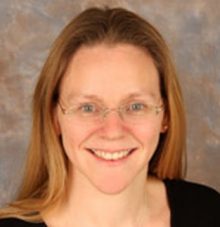
Dr Mobbs (left) replied: “I can’t be certain that we are meeting guidelines but I’m aware of the guidelines, of that guidance“. She added that most of those registered at the practice were under 30 years old, and 40% of the appointments were for mental health issues.
 As a new week began, on the fifth day of the inquest, the court heard from Dr Adrian Barnes (right), a senior physics tutor, who said that he heard towards the end of 2017 that Natasha had been missing work. He met the second-year student at the start of December and concluded that she had “genuine social anxiety”.
As a new week began, on the fifth day of the inquest, the court heard from Dr Adrian Barnes (right), a senior physics tutor, who said that he heard towards the end of 2017 that Natasha had been missing work. He met the second-year student at the start of December and concluded that she had “genuine social anxiety”.
In February, Dr Barnes contacted the university’s disability services, and was told that they would get in touch with Natasha. However, Natasha did not engage with disability services and Dr Barnes told the court the service had not told him she had not responded to it.
Dr Barnes said that he also knew that the student wellbeing service had been informed of Natasha’s condition, but the court was told that there had been no direct contact between it and her.
Mr Stoate suggested to Dr Barnes that “no meaningful plan” was in place for the laboratory conference, and said: “On 30th April she was under stress which could and should have been avoided.”
Mr Stoate suggested to Dr Barnes that Natasha faced being failed academically. Dr Barnes answered: “That is not true. It’s clear she wanted to carry on. She wanted to do her presentations. We were trying to find a way in which we could overcome the issue of social anxiety.”
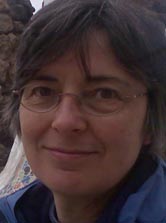 The court also heard from student administration manager Barbara Perks (left). She told the court that, after Natasha contacted her office, she kept in touch with the student and met her a number of times.
The court also heard from student administration manager Barbara Perks (left). She told the court that, after Natasha contacted her office, she kept in touch with the student and met her a number of times.
On April 16th, Natasha’s flatmate contacted student services to say that Natasha was self-harming. Ms Perks told the inquest that she referred the case to the student wellbeing manager, saying: “My immediate concern was that Natasha was supported.”
Four days later, Natasha emailed Ms Perks to say that she was “having suicidal thoughts“. She continued: “I went to the flat on Park Street and took them (Natasha and her flatmate) to the GP,” describing the student at this point as “quiet and self contained“.
Ms Perks said she followed up with student health and talked to Natasha about maximising her success. In her last contact with Natasha on April 27th, Ms Perks described her as “quite positive” ahead of lab interviews which are a mandatory part of exams but which had caused her significant anxiety.
Ms Perks talked to the student about not getting up on stage if she did not wish to, but Natasha told her that she wanted to present with the group. The following morning she heard that Natasha had died.
 On the sixth day of the inquest, director of student services Mark Ames (right) spoke about the rôle of presentations. He said: “There is an inevitable balance between academic integrity, integrity of assessment and ensuring students aren’t being disadvantaged, that needs to be considered at an individual level. The rationale for students giving presentations is to give them skills that will be useful for future life – also the case that when that is unduly stressful, we will consider.
On the sixth day of the inquest, director of student services Mark Ames (right) spoke about the rôle of presentations. He said: “There is an inevitable balance between academic integrity, integrity of assessment and ensuring students aren’t being disadvantaged, that needs to be considered at an individual level. The rationale for students giving presentations is to give them skills that will be useful for future life – also the case that when that is unduly stressful, we will consider.
“Clearly it’s in nobody’s interest for us to insist on an assessment if we feel it will put them at significant risk. Discussions between teams are common practice and will continue to be in the future.”
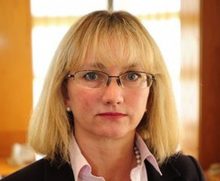 The inquest was adjourned for two days, for coroner Maria Voisin (left) to prepare her conclusion. This was delivered last Thursday, in the form of a narrative verdict, in which the coroner listed the following failings by the mental health partnership:
The inquest was adjourned for two days, for coroner Maria Voisin (left) to prepare her conclusion. This was delivered last Thursday, in the form of a narrative verdict, in which the coroner listed the following failings by the mental health partnership:
- There was an unacceptable delay between Natasha’s being referred to the Avon and Wiltshire Partnership by the university GP on February 20, 2018, and a specialist assessment taking place.
- There was a poor standard of communication between the specialist mental health service and the university GP.
- Her risk of self-harm was not adequately assessed by the Avon and Wiltshire Partnership.
- The plan for Natasha to continue on antidepressant medication prescribed to her by a trainee psychiatrist was inadequate.
- The assessment and management by the mental health trust was significantly flawed.
- The failure by the specialist mental health team to make an adequate assessment and implement an immediate care plan was a second missed opportunity to help Natasha in March 2018.
- The delay in allocating a care co-ordinator to her following a referral from the crisis team in March 2018 was unacceptable, the absence of a system for providing holiday cover was quite shocking and the allocation of an individual to develop such a therapeutic relationship occurred far too late for it to have helped Natasha.
- The failure to develop a crisis plan for Natasha in April 2018 was an important omission.
- The failure to provide a timely and detailed management plan for Natasha represents a causal connection with her subsequent death.
However, Ms Voisin said that she had not found evidence of failures by Natasha’s GP or the university. This is an astonishing statement. On February 20th, Dr St John Wright had prescribed Sertraline to Natasha, in total disregard of NICE Guidelines. NICE recognises that SSRI antidepressants come with a risk of suicidal ideation, which is why they should be prescribed only to adults with moderate to severe depression. Natasha presented with social anxiety, a condition regarded as “subthreshold” by NICE. She should, therefore, never have been prescribed antidepressants. This error was then compounded by Dr Webb, her colleague at the SHS, as well as the trainee psychiatrist Dr Anneer.
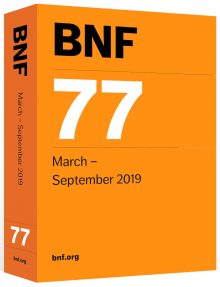 All GPs practising in the UK are duty bound to adhere to what is in the British National Formulary (BNF), from which they prescribe. This contains the paragraph: “The use of antidepressants has been linked with suicidal thoughts and behaviour. Where necessary patients should be monitored for suicidal behaviour, self-harm or hostility, particularly at the beginning of treatment or if the dose is changed.” Drastic changes to Natasha’s prescription occurred when, due to an administrative error, she ran out of Sertraline after a week. After 6 days without medication, Natasha was given 7 antidepressants tablets by a trainee psychiatrist. It would have been over a month between the completion of that prescription and the re-prescribing of Sertraline by Dr Webb, who, like her colleagues at the SHS, should have been well aware of the recommendations of NICE and the BNF.
All GPs practising in the UK are duty bound to adhere to what is in the British National Formulary (BNF), from which they prescribe. This contains the paragraph: “The use of antidepressants has been linked with suicidal thoughts and behaviour. Where necessary patients should be monitored for suicidal behaviour, self-harm or hostility, particularly at the beginning of treatment or if the dose is changed.” Drastic changes to Natasha’s prescription occurred when, due to an administrative error, she ran out of Sertraline after a week. After 6 days without medication, Natasha was given 7 antidepressants tablets by a trainee psychiatrist. It would have been over a month between the completion of that prescription and the re-prescribing of Sertraline by Dr Webb, who, like her colleagues at the SHS, should have been well aware of the recommendations of NICE and the BNF.
The paid expert, Dr Mynors-Wallis, said that “failure to provide a timely and detailed management plan for Miss Abrahart represents a causal connection with her subsequent death.” However, this “expert” chose not to mention the indisputable part in the tragedy played by the on-off-on-off-on prescription of a drug which is linked inextricably to suicidal ideation. A professional of his status would surely have been familiar with NICE and BNF Guidelines, and would certainly have known of the propensity of antidepressants to induce akathisia.
And Maria Voisin, as an experienced coroner, will have presided over enough inquests where a self-inflicted death has been linked to SSRI antidepressants to be able to start joining up a few dots.
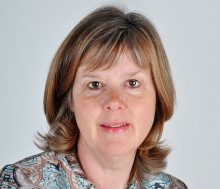 After the inquest, Professor Sarah Purdy (left), Pro Vice-Chancellor for Student Experience at the University of Bristol, said: “Staff in the school, along with colleagues from Student Services, tried very hard to help Natasha. We are very sad that these efforts could not help prevent her tragic death.”
After the inquest, Professor Sarah Purdy (left), Pro Vice-Chancellor for Student Experience at the University of Bristol, said: “Staff in the school, along with colleagues from Student Services, tried very hard to help Natasha. We are very sad that these efforts could not help prevent her tragic death.”
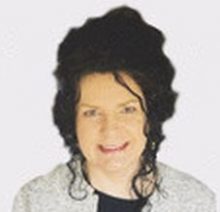 Julie Kerry (right), the director of nursing at AWP, said: “We fully accept the findings of the coroner and recognise that we did not act in accordance to best practice in all of the care provided to Natasha. We and our partner organisations know that changes need to happen to some of our processes and ways of working and we are committed to doing this and have already put in place some measures to minimise the risk of a similar incident occurring in the future.”
Julie Kerry (right), the director of nursing at AWP, said: “We fully accept the findings of the coroner and recognise that we did not act in accordance to best practice in all of the care provided to Natasha. We and our partner organisations know that changes need to happen to some of our processes and ways of working and we are committed to doing this and have already put in place some measures to minimise the risk of a similar incident occurring in the future.”
It emerged that the University had objected to the family’s request for the inquest to sit with a jury and submitted that there was no “legal or factual basis for intensive scrutiny” of its actions.
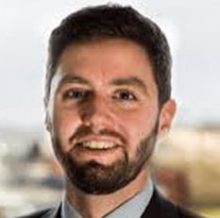 Gus Silverman, a public law and human rights lawyer at Irwin Mitchell, representing the family, added: “The University owed a duty of care to Natasha. It’s hard to understand how such a deeply vulnerable student received no direct contact from trained members of staff within the University’s Student Services, in which it has invested so much money in recent years. An apparent lack of information sharing, coordination and compliance with the University’s own policies on supporting disabled students left Natasha exposed to stresses which could and have should have been removed.
Gus Silverman, a public law and human rights lawyer at Irwin Mitchell, representing the family, added: “The University owed a duty of care to Natasha. It’s hard to understand how such a deeply vulnerable student received no direct contact from trained members of staff within the University’s Student Services, in which it has invested so much money in recent years. An apparent lack of information sharing, coordination and compliance with the University’s own policies on supporting disabled students left Natasha exposed to stresses which could and have should have been removed.
“At the same time we know that Natasha was being badly let down by specialist mental health services who failed to put in place a timely and adequate plan to mitigate Natasha’s risk of suicide. At various points throughout the inquest process the University of Bristol has sought to dismiss concerns raised on behalf of Natasha’s family by arguing that it is ‘not subject to any statutory requirement to provide health services’.
“There is an unfortunate and uncomfortable contrast between the arguments advanced by the University in this case and its other public pronouncements about wanting to learn lessons from the alarmingly high number of deaths among its students. It is to be hoped that the University will now reflect carefully on the meaningful changes it needs to make as a result of Natasha’s death.”
Natasha’s parents, Margaret and Bob, who are now considering their legal options against the University, said: “Natasha’s social anxiety resulted in a six month struggle with oral assessments at the University of Bristol. Her anxiety forced her to avoid most of these – for which the University docked her marks. As a result our bright, capable daughter faced failing academically for the first time in her life.
“Our daughter came to Bristol seeking a better, brighter future. Instead, we lost her forever. We will never stop working to ensure that other students don’t endure the suffering she did. We never want any other families to live with the pain we and our friends will face for the rest of our lives. This fight to make university a safer place for our children continues.”
Related Articles:
Bristol University: the antidepressant connection
Students, Anxiety and Antidepressants
Citalopram: Ten Years of Denial
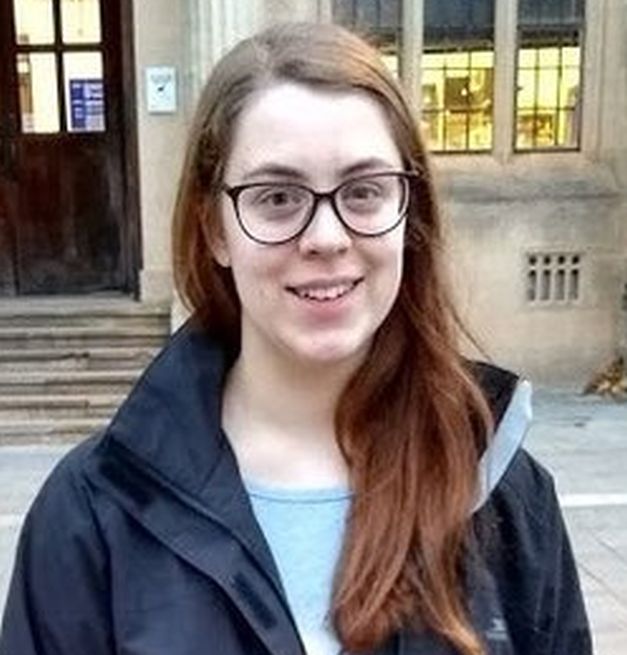

Avon and Wiltshire Mental Health Partnership again! There are no words! My daughter died by suicide whilst under their so-called care.
The coroner at my daughter’s inquest was also Maria Voisin, she has a lot to answer for.
My heart goes out to Natasha’s family and friends, I know their pain.
My name is Josephine and I was a student at Bristol in 1995 to 1998 and I have not been the same since. I was given an antidepressant in 2004 after my son was born in 2003. When the antidepressant didn’t work I was prescribed an antipsychotic this gave me psychosis.
I have had rebound psychosis every time I try to come off antipsychotics. At the moment I’m on Haloperidol and it’s giving me terrible insomnia. I get to sleep about 3am and wake around 6.30am. Its like torture and i often think about ending it all. My depression started at Bristol got worse after having a baby.